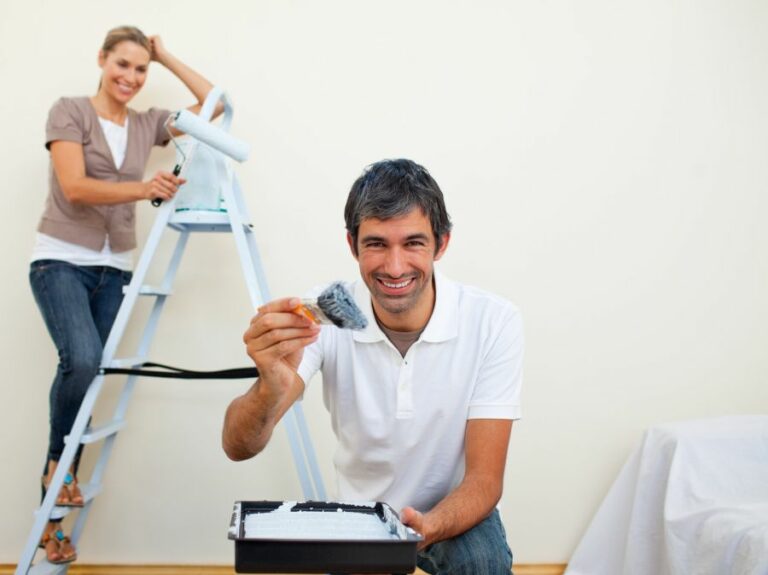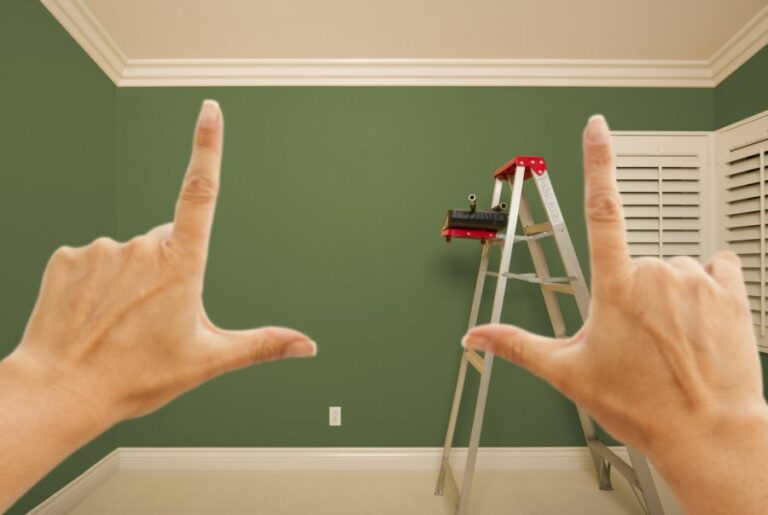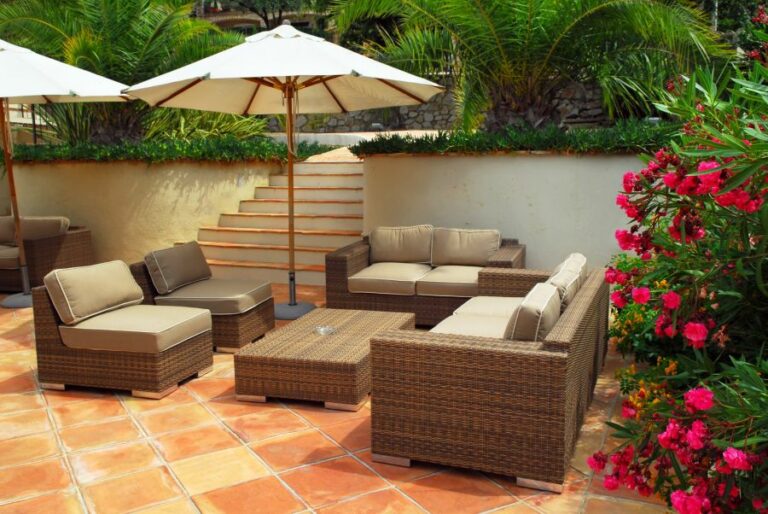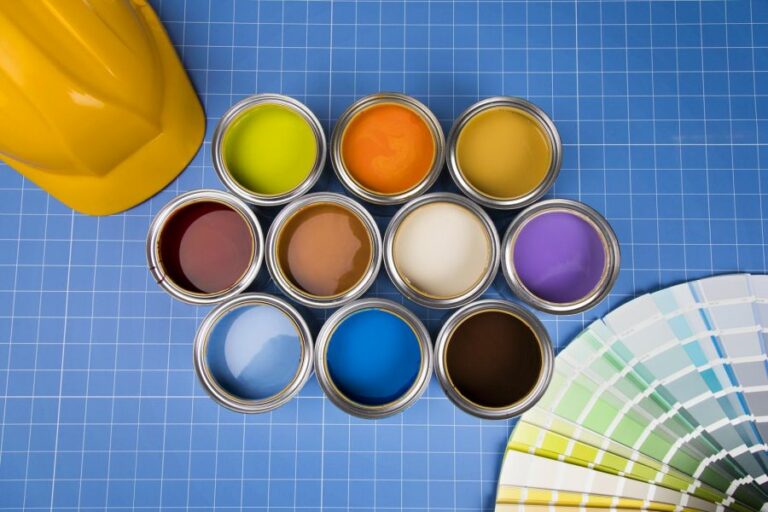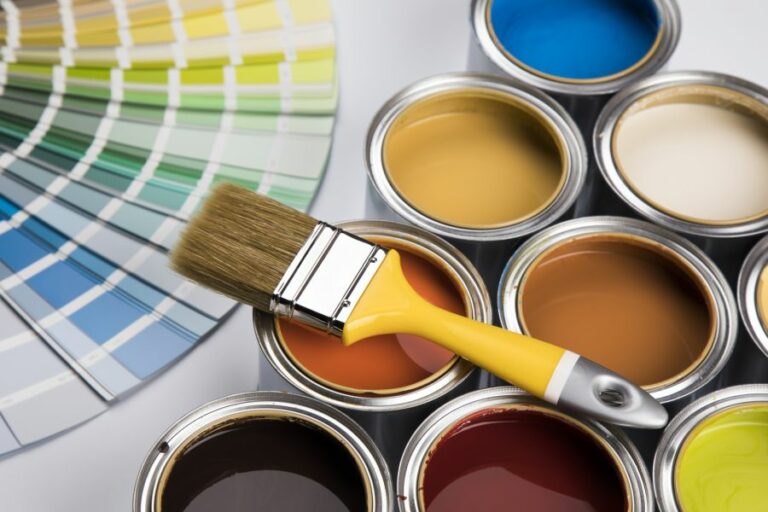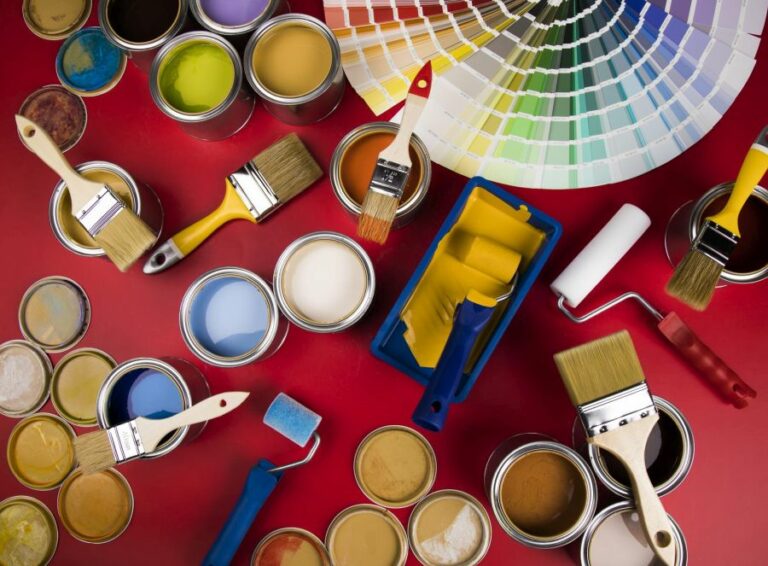Outdoor Waterproof Paint, 25 Things You Should Know
Are you tired of watching your exterior walls lose charm due to harsh weather conditions? Fret not! The latest blog post, ‘Outdoor Waterproof Paint,’ is here to rescue your home’s aesthetics. Discover the magic of waterproof paint and its remarkable ability to shield surfaces from damage caused by moisture, mold, and mildew.
Outdoor waterproof paint:
Outdoor waterproof paint protects exterior surfaces from weather damage and prolongs their lifespan. There are various types, such as acrylic latex, elastomeric, concrete waterproof, and oil-based paints, from which the choice depends on factors like the surface material, climate conditions, warranty, and environmental concerns. To ensure success, following proper preparation and application guidelines is crucial, including cleaning, repairing, priming, and allowing adequate drying time.

Discover the best outdoor waterproof paint options to enhance your home’s exterior aesthetics and durability! Learn about various types, finishes, and application techniques for creating long-lasting, weather-resistant surfaces. Protect your investment and add curb appeal. Read on!
Contents
- 1 Exterior Water-Resistant Paint
- 2 Determining the Most Effective Paint for Waterproofing Purposes
- 3 What is the Most Suitable and Effectively Durable Paint for Outdoor Areas Exposed to Wet Conditions?
- 4 What is the Duration of Effectiveness of Waterproof Paint?
- 5 What is the Most Durable and Longest Lasting Exterior Paint for Outdoor Surfaces?
Exterior Water-Resistant Paint
Waterproofing is essential for protecting various outdoor surfaces. In order to maintain the quality and durability of outdoor spaces, investing in high-quality outdoor waterproof paint will make your structures last longer and withstand different weather conditions.
• Types of Outdoor Waterproof Paint
You might consider using several different types of outdoor waterproof paint for your projects. Here are some popular choices:
– Acrylic Latex Paint
Acrylic latex paint is a widely used option for various exterior surfaces, such as wood, concrete, and stucco. It dries quickly and is known for its flexibility and durability. This paint can last for many years and maintain an excellent finish. It’s resistant to fading and can be easily cleaned with soap and water.
– Elastomeric Paint
Elastomeric paint is specifically designed for waterproofing and providing an elastic barrier against moisture. This paint is perfect for areas that require heavy-duty protection, such as exterior walls or roofs.
It forms a thick rubber-like membrane that can stretch and contract with changes in temperature, preventing cracks and other damage.
– Concrete Waterproof Paint
Concrete waterproof paint is specially formulated for use on masonry and concrete surfaces. It penetrates deep into the surface, sealing and protecting it from moisture damage. This type of paint is an excellent choice for waterproofing basements, garage floors, and exterior concrete structures.
– Oil-Based Waterproof Paint
Oil-based waterproof paint is a traditional choice for wood surfaces. It penetrates deep into the wood, forming a barrier against moisture, insects, and decay.
However, oil-based paints have a strong odor and can be more challenging to work with than water-based paints. They take longer to dry and may require multiple coats for proper waterproofing.
• Choosing the Right Waterproof Paint for Your Project
Picking the right type of outdoor waterproof paint could depend on several factors, such as the surface you’re painting, your budget, and your personal preferences. No matter what type of paint you decide on, make sure you choose a high-quality product that will stand the test of time.
– Surface Material
It’s crucial to consider the type of surface you’re waterproofing. Different materials require different kinds of paint. For instance, wood surfaces are usually better-suited for oil-based paints, while concrete or masonry surfaces may benefit from concrete-specific waterproof paint.
– Weather Conditions
Local climate and weather conditions will also affect the type of paint you should use. Extremely cold, hot, or humid regions might require specialized paint with additives that boost performance under specific conditions.
– Warranty and Guarantee
When selecting waterproof paint, look for products that include a manufacturer’s warranty or guarantee. This will give you peace of mind that the product will stand up to the test of time and perform as expected. A warranty can also indicate the confidence a manufacturer has in its paint.
– Environmental Considerations
If you are particularly concerned about the environment, consider choosing a paint with lower levels of volatile organic compounds (VOCs) or one that is specifically labeled as an environmentally friendly option. Low-VOC paints can help improve indoor air quality and reduce harmful emissions.
• Application Tips for Success
Proper preparation and application are essential to ensure the success of any outdoor waterproof paint project. Here are some helpful tips to follow:
- Clean: Thoroughly clean the surface you plan to paint, removing dirt, debris, mold, and mildew. Power washing can be a quick and effective method for large surfaces such as walls or fences.
- Repair: Fix any damage or cracks in the surface. Use a high-quality concrete patch to fill cracks; for wood, fill any gaps or holes with wood filler.
- Prime: Apply a suitable primer to the surface before painting. A primer will help the paint adhere properly and prevent future issues, such as peeling or blistering.
- Apply: Follow the manufacturer’s instructions for applying the waterproof paint. Some may require multiple coats and specific application methods, so reading the label before starting your project is crucial.
- Cure: Allow the paint to dry and cure properly before exposing it to moisture or weather. Drying time might vary depending on the paint’s formulation and local climate conditions.
• Final Thoughts
Outdoor waterproof paint is crucial in protecting your investment in various outdoor structures. Selecting the right type of paint and following proper application guidelines will ensure lasting protection for your project.
Remember to consider factors such as the type of surface, local weather conditions, warranty, and environmental considerations when choosing a paint that best suits your needs. With the right waterproof paint, you can preserve and prolong the lifespan of your outdoor surfaces for years to come.
Determining the Most Effective Paint for Waterproofing Purposes
Waterproofing your home or any other structure is essential to protect it from water damage, mold, and mildew. Several types of waterproofing paint are available in the market, making it daunting to choose the appropriate one.
• Introduction To Waterproofing Paints
Waterproofing paints come in a variety of materials and are formulated differently to cater to different surfaces and environments. They are specially formulated to create a barrier against water penetration, offer a seal against moisture, and protect the substrate and structure from detrimental damp problems.
– Acrylic Waterproofing Paint
Acrylic paint is a water-based paint that is known for its fast-drying properties and versatility. It is suitable for various surfaces, including concrete, masonry, brick, and wood.
Acrylic paint is capable of adhering to smooth surfaces and is flexible enough to expand and contract with temperature changes. It offers long-lasting protection against water penetration and is relatively easy to apply.
– Elastomeric Waterproofing Paint
Elastomeric paint is a high-quality waterproofing paint that provides an elastic, durable, and water-resistant coating. It is specifically designed to expand and contract with the surface to which it is applied, ensuring a continuous and effective waterproof barrier.
It is ideal for exterior surfaces like concrete, stucco, and masonry and is highly resistant to UV rays, temperature changes, and cracking.
– Cementitious Waterproofing Paint
Cementitious waterproofing paint is mainly used for masonry and concrete surfaces like basements, foundations, and retaining walls. It consists of a mixture of cement, sand, and water, which forms a thick and rigid barrier against water.
This type of paint is highly durable and bonds well with concrete surfaces. However, it may not be suitable for surfaces that experience constant movement and temperature fluctuations.
– Bituminous Waterproofing Paint
Bituminous paint is also known as asphalt paint, which is composed of coal tar, bitumen, or asphalt materials. This type of paint is ideal for waterproofing metal surfaces, such as metal roofing, pipes, and tanks.
It dries to form a thick and flexible barrier that prevents water penetration and protects against rust and corrosion.
• Factors To Consider When Choosing Waterproofing Paint
To ensure that you select the best waterproofing paint that suits your needs, it is crucial to consider the following factors:
– Surface Material
The type of surface material you are waterproofing will play a crucial role in determining which paint is best suited for your needs. For instance, acrylic paint works well on a variety of surfaces, while elastomeric paint is best for concrete and masonry surfaces.
Assess the surface material correctly to ensure a proper and long-lasting waterproofing solution.
– Interior Or Exterior Application
When selecting waterproofing paint, make sure to consider the intended use of the paint. Some waterproofing paints are specifically designed for indoor or outdoor use, while others can be used for both applications.
For example, elastomeric and acrylic paints are suitable for exterior walls, while cementitious paint is ideal for interior basement walls.
– Climate And Weather Conditions
It is crucial to consider the climate and weather conditions in the area where the waterproofing paint will be applied. Extreme temperature fluctuations, excessive rainfall, or high humidity levels may compromise the effectiveness and lifespan of the waterproof coating.
Consider choosing a waterproof paint specifically designed for your region’s weather conditions.
– VOC Level
Volatile organic compounds (VOCs) are chemicals present in many paint products and can contribute to air pollution and health problems when inhaled. Choosing waterproof paint with a low VOC level is recommended to minimize the risk of adverse effects on human health and the environment.
• My Recommendations
Based on the factors discussed, the following are my recommendations for the best waterproofing paints:
– Best Overall: Elastomeric Waterproofing Paint
Elastomeric paint offers excellent waterproofing protection and is suitable for various exterior surfaces. It forms a highly durable and elastic barrier against water penetration and is resistant to UV rays and temperature changes. This paint type is ideal for both DIYers and professionals.
– Best For Concrete And Masonry: Cementitious Waterproofing Paint
For concrete and masonry surfaces, cementitious waterproofing paint is highly recommended. It forms a rigid barrier that bonds well with the surface and offers long-lasting protection from water penetration. It is ideal for interior surfaces like basements and foundations.
– Best For Metal Surfaces: Bituminous Waterproofing Paint
To protect metal surfaces from water damage and corrosion, bituminous waterproofing paint is the best choice. It forms a thick and flexible barrier that prevents water penetration and offers protection against rust and corrosion.
In conclusion, choosing the correct waterproofing paint depends on several factors, such as the surface material, application area, climate conditions, and environmental concerns.
By considering these aspects and the recommendations provided, you should be able to select the best waterproofing paint suitable for your specific requirements.
Paint Brand | Type | Surface | Durability |
|---|---|---|---|
Drylok | Water-Based | Interior/Exterior | High |
Rust-Oleum | Oil-Based | Interior/Exterior | High |
KILZ | Water-Based | Interior/Exterior | Medium |
Flex Seal | Aerosol | Interior/Exterior | Medium |
What is the Most Suitable and Effectively Durable Paint for Outdoor Areas Exposed to Wet Conditions?
As an expert in the field of painting and home improvements, I understand how crucial it is to choose the right paint for outdoor wet areas. Exterior surfaces, especially in wet or damp locations, require specific types of paint to withstand harsh environmental conditions.
• Factors to Consider When Choosing Paint for Outdoor Wet Areas
– Durability
One of the most important factors to consider when choosing paint for any outdoor area is its durability. In some locations, wet areas are prone to harsher conditions such as rain, humidity, and even snow. The paint used in these areas should be able to withstand these elements without peeling, cracking, or fading.
– Mold and Mildew Resistance
Mold and mildew are common issues that arise in wet areas. These contaminants can not only be unsightly but also pose health risks. When selecting paint for your outdoor wet area, choosing a paint that offers mold and mildew resistance is essential.
– UV Resistance
The sun’s UV rays can fade and cause damage to exterior surfaces over time. UV resistance is another significant factor that must be considered when selecting the best paint for outdoor wet areas. This would ensure the longevity of your paint job and keep it looking fresh for years to come.
• The Best Types of Paint for Outdoor Wet Areas
– Acrylic Latex Paint
Acrylic latex paint is one of the most common paint types used for outdoor wet areas. This water-based paint is highly durable and adheres well to various surfaces. Acrylic latex paint provides excellent resistance to mildew and UV rays, making it a suitable option for damp locations.
I recommend the use of acrylic latex paint for exterior surfaces such as concrete, masonry, siding, and even on wooden surfaces that have been primed.
This paint comes in various finishes, such as flat, satin, and gloss, offering versatile options based on your aesthetic preferences and the specific requirements of your project.
– Elastomeric Paint
Elastomeric paint is a highly durable and flexible type of paint designed explicitly for exterior surfaces. The paint has excellent water resistance and can expand and contract with temperature changes without cracking or peeling.
This property makes elastomeric paint ideal for outdoor wet areas that often face extreme temperature fluctuations.
I highly recommend elastomeric paint for surfaces prone to water seepage or existing cracks, as the paint’s elasticity can effectively seal these imperfections. Some common surfaces ideal for elastomeric paint include stucco, masonry, and concrete.
– Oil-Based Paint
Oil-based paint is not as commonly used for outdoor wet areas as it once was due to the prevalence of water-based paints. However, oil-based paint is still a viable option in specific scenarios. Oil-based paint takes longer to dry, which can be a challenge in a damp environment.
However, oil-based paint is highly durable once dried and can resist moisture effectively.
I recommend using oil-based paint for wooden surfaces, as it can penetrate into the wood fibers, providing excellent protection against damage caused by moisture.
Remember that oil-based paint may not be the most environmentally friendly option and can have stronger odors than water-based paints.
• Top Recommended Outdoor Wet Area Paint Brands
Based on my personal experience, several paint brands have consistently delivered excellent results for outdoor wet area projects:
- Sherwin-Williams Duration: This acrylic latex paint is highly durable and provides excellent resistance to mold, mildew, and UV rays. The paint also has self-priming abilities, which can save time and effort during the application process.
- Behr Premium Plus: This acrylic latex paint offers fantastic durability, UV resistance, and mildew resistance. Behr Premium Plus also features a primer component, making it a convenient option for various outdoor surfaces.
- Valspar Duramax: Valspar Duramax is a high-quality, all-weather exterior paint that provides excellent protection against the elements. The paint has exceptional adhesion and offers resistance to mold, mildew, and UV rays.
- KILZ Exterior Siding, Fence, and Barn Paint: This oil-based paint is specifically designed for wooden surfaces in outdoor wet areas. The paint is known for its durability and excellent water resistance.
In conclusion, choosing the best paint for outdoor wet areas is important to ensure the longevity and aesthetic appeal of your exterior surfaces. Factors such as durability, mold and mildew resistance, and UV resistance should be considered when selecting the appropriate paint type.
Acrylic latex, elastomeric, and oil-based paints are suitable for outdoor wet area projects. By selecting high-quality paint from a reputable brand, you can rest assured that your exterior surfaces will remain fresh and protected even in the harshest of conditions.
Paint Brand | Type | Features | Application |
|---|---|---|---|
Behr Premium Porch & Patio Floor Paint | Low-Luster Enamel | Weather resistant, easy to clean, mildew resistant | Floors, decks, patios, and porches |
KILZ Exterior Siding, Fence & Barn Paint | Water-based Acrylic | Durable, weatherproof, UV resistant, mildew resistant | Fences, siding, barns, and other outdoor surfaces |
Rust-Oleum Zinsser Perma-White Exterior Paint | Latex | Mold & mildew resistant, self-priming | Outdoor walls, siding, and trim |
BEHR Premium Direct-To-Metal Semi-Gloss Paint | Water-based | Corrosion and weather-resistant, excellent adhesion, low VOC | Doors, windows, railings, and other metal surfaces |
What is the Duration of Effectiveness of Waterproof Paint?
Waterproof paint, also known as water-resistant paint, is a type of paint specifically designed to protect surfaces from water damage. It is commonly used in areas that are prone to moisture, such as bathrooms, kitchens, and basements.
Understanding the lifespan of waterproof paint is essential in making informed decisions when it comes to maintaining your home or commercial property.
• Factors Affecting the Lifespan of Waterproof Paint
Several factors contribute to the lifespan of waterproof paint. These include the quality of the paint, the surface it is applied, proper application, and environmental conditions.
– Quality of Waterproof Paint
The quality of the waterproof paint greatly impacts its lifespan. High-quality water-resistant paints typically contain higher concentrations of solids, providing better surface adhesion and creating a more durable, long-lasting coating.
– Surface Type
The type of surface the waterproof paint is applied to can affect the paint’s longevity. Smooth, non-porous surfaces such as glass or metal may provide better protection and last longer than porous surfaces like wood or concrete, which may require more frequent reapplication.
– Application Technique
Proper application is crucial to the lifespan of waterproof paint. Adequate surface preparation, including cleaning and priming, ensures that the paint adheres well to the surface.
Additionally, applying the recommended number of coats and allowing ample drying time between coats will ensure the best possible protection and longevity.
– Environmental Conditions
Lastly, environmental factors such as humidity, temperature, and exposure to sunlight can impact the lifespan of waterproof paint. For instance, areas that experience extreme temperatures, high humidity, or excessive moisture may require more frequent reapplications of waterproof paint.
• The Average Lifespan of Waterproof Paint
In general, waterproof paint is expected to last between 3 and 5 years, depending on the abovementioned factors. High-quality, well-applied paint on a suitable surface in a well-maintained, climate-controlled environment may even last up to 7 years or longer.
However, keep in mind that these are average figures and may not apply to every situation. Regular maintenance checks and timely repairs can help ensure that your waterproof paint performs at its best for as long as possible.
• Extending the Lifespan of Waterproof Paint
To maximize the lifespan of waterproof paint, consider the following tips:
– Invest in High-Quality Paint
When choosing waterproof paint for your project, opt for a high-quality product from a reputable manufacturer. Though these paints may come at a higher price point, the investment will likely pay off in the long run due to their longer lifespan and better performance.
– Proper Surface Preparation
Before applying waterproof paint, ensure the surface is clean, dry, and free of debris or contaminants. If needed, use a primer specifically designed for the surface to promote better adhesion and create a stable base for the paint.
– Follow the Manufacturer’s Instructions
Each paint manufacturer may have specific guidelines for applying their waterproof paint. Following their recommendations regarding the number of coats, drying time, and any other application instructions is essential to achieve the best possible results and maximize the paint’s lifespan.
– Regular Maintenance
It is crucial to perform regular maintenance checks on areas where waterproof paint has been applied, especially in spaces prone to moisture infiltration. This includes inspecting for any signs of peeling, cracking, or water damage and addressing these issues promptly to minimize further deterioration.
• In Conclusion
Waterproof paint can be an effective solution for protecting your home or commercial property from water damage.
By understanding the factors that influence its lifespan and taking the necessary steps to maintain and extend its longevity, you can ensure that your investment in waterproof paint provides long-lasting protection for your property.
With proper care and maintenance, waterproof paint can last anywhere from 3 to 7 years or even longer under ideal conditions.
Type of Waterproof Paint | Average Lifespan |
|---|---|
Acrylic Waterproof Paint | 5-10 years |
Epoxy Waterproof Paint | 10-15 years |
Latex Waterproof Paint | 5-10 years |
Bituminous Waterproof Paint | 10-20 years |
Cementitious Waterproof Paint | 10-15 years |
What is the Most Durable and Longest Lasting Exterior Paint for Outdoor Surfaces?
• Introduction to Outdoor Paints
When it comes to outdoor painting projects, selecting the right paint is crucial for achieving long-lasting results. The harsh elements, including sun, rain, and wind, can cause paint to crack, fade, and peel over time.
• Acrylic Latex Paint: Superior Durability and Flexibility
One of the most popular and recommended options for outdoor paint is acrylic latex. This water-based paint is known for its excellent durability and long-lasting protection against harsh weather conditions.
The acrylic polymer within the paint formulation offers high resistance to UV rays, preventing colors from fading and keeping the surface looking fresh for extended periods.
Additionally, acrylic latex paint is highly flexible, which allows it to expand and contract with temperature changes and avoid cracking. It also adheres well to various surfaces, making it suitable for a range of outdoor painting projects.
– Pros of Acrylic Latex Paint:
- Excellent durability against weather elements
- High UV resistance to prevent color fading
- Flexible to avoid cracking during temperature fluctuations
- Strong adhesion to various surfaces
- Water-based, which makes it easier to clean up and environmentally friendly
– Cons of Acrylic Latex Paint:
- May not be suitable for direct application on some substrates like metal and plastic
- Greater drying time compared to oil-based paints
- Not as abrasive-resistant as some specialty paints
• Elastomeric Paint: Ideal for Masonry Surfaces
Elastomeric paint is specifically designed for masonry surfaces, such as stucco, concrete, and brick. It is a high-build, weather-resistant coating that offers outstanding durability and longevity.
Elastomeric paint forms a flexible yet tough film on the surface, making it resistant to water penetration, wind, and sun exposure.
The elasticity of elastomeric paint allows it to bridge minor cracks in the substrate, protecting the surface from further damage. It also expands and contracts with temperature changes, reducing the risk of paint failure.
As a result, elastomeric paint can provide longevity of up to 10 years or more, depending on the quality of the product and the correct application process.
– Pros of Elastomeric Paint:
- Exceptional durability and protection for masonry surfaces
- Elastic properties for bridging cracks and preventing paint failure
- Resistant to water penetration and harsh weather elements
- Superior longevity, up to 10 years or more
– Cons of Elastomeric Paint:
- Limited to masonry surfaces
- More challenging application process compared to acrylic latex paint
- Higher price point than regular exterior paints
• Alkyd/Oil-Based Paint: An Option for Specific Surfaces
Alkyd, or oil-based paint, offers a durable and long-lasting finish for outdoor painting projects. Alkyd paints provide excellent adhesion and resistance to wear, making them suitable for surfaces like metal and wood that require strong protection.
However, alkyd paints have a higher VOC content than acrylic latex paints, making them less environmentally friendly. They are also less UV-resistant, which can lead to color fading over time.
Additionally, alkyd paint may become brittle and crack when exposed to fluctuating temperatures, resulting in decreased longevity compared to acrylic latex and elastomeric coatings.
– Pros of Alkyd/Oil-Based Paint:
- Strong adhesion to specific surfaces like metal and wood
- High resistance to wear and abrasion
- Durable and long-lasting finish
– Cons of Alkyd/Oil-Based Paint:
- Higher VOC content compared to water-based paints
- Less UV-resistant, leading to color fading
- May become brittle and crack with temperature changes
- Longer drying times and a more challenging clean-up process
• Conclusion: Recommendations for the Longest Lasting Outdoor Paint
Based on its durability, flexibility, and overall performance, acrylic latex paint is the top recommendation for the longest-lasting outdoor paint suitable for various surfaces.
However, it is essential to consider the specific needs of your painting project, as elastomeric paint may be the best option for masonry surfaces, and alkyd paint may be ideal for metal and woodwork.
No matter which paints you choose, proper surface preparation and application techniques are crucial for achieving long-lasting results. Be sure to follow the manufacturer’s instructions and, if needed, consult with a professional painter to guide you through the process.
Ultimately, investing in the right paint and following best practices will ensure your outdoor painting project stands the test of time and looks fresh for many years to come.

